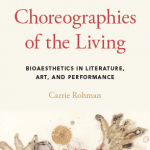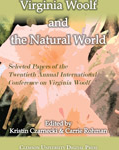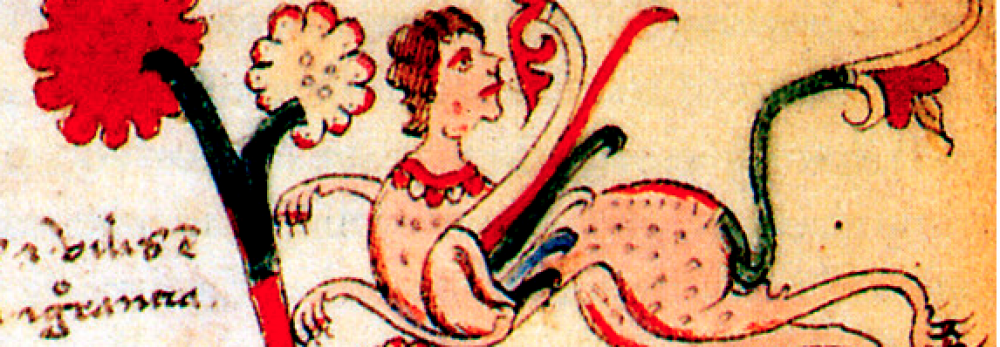FORTHCOMING VOLUME:
Broken Record: Gendered Abuse in Academia. Co-edited with Mary K. Holland and Carlyn Ferrari, Afterward by Sara Ahmed. Albany: SUNY Press, 2025.
____________
 Choreographies of the Living: Bioaesthetics in Literature, Art, and Performance. New York: Oxford University Press, 2018.
Choreographies of the Living: Bioaesthetics in Literature, Art, and Performance. New York: Oxford University Press, 2018.
An argument that “could play an enormous role in the shifting consciousness of our time.”
—TANEY RONIGER, Brooklyn Rail
“Given its clear, accessible style and its focus on engagements with animality in twentieth and twenty first-century literature, art, and performance, Choreographies of the Living promises to have broad appeal for specialists and students across the arts and humanities… this watershed study will be relevant not only for readers based in animal studies and modernist, postmodernist, and/or contemporary literature, but also for readers interested in dance, theater and performance studies, cultural studies, history, and philosophy.”
—DAVID HERMAN, author of Narratology beyond the Human: Storytelling and Animal Life (OUP, 2018)
“Choreographies of the Living constitutes a highly important and original intervention
into the field of animal studies in the humanities. Carrie Rohman has carried existing
arguments about the centrality of animality to aesthetic activity a significant step further,
arguing that, in her terms, the aesthetic is animal… an ambitious argument but one that
Rohman makes very persuasively.”
—MARIANNE DEKOVEN, Professor Emerita of English, Rutgers University
Choreographies of the Living is available from OUP, amazon.com, and many other booksellers.
 Stalking the Subject: Modernism and the Animal. New York: Columbia University Press, 2009.
Stalking the Subject: Modernism and the Animal. New York: Columbia University Press, 2009.
“Smart, timely, and incisive, Stalking the Subject makes an important contribution to modernist criticism and consolidates crucial work in animal studies. Carrie Rohman draws on Cary Wolfe’s seminal Animal Rites to frame psychoanlaysis from Sigmund Freud to Slavoj Zizek in Anglo-Amerian modernist literature from H. G. Wells to Djuna Barnes. Especially notable is her vigorous contribution to the ongoing delineation of D. H. Lawrence’s posthumanism. Stalking the Subject revises modernism from the side of the animal other” —Bruce Clarke, Texas Tech University
Stalking the Subject is available from CUP, amazon.com, and many other booksellers. It is also available in a Kindle edition through Amazon.
 Virginia Woolf and the Natural World: Selected Papers of the Twentieth Annual International Conference on Virginia Woolf. Ed. Kristin Czarnecki & Carrie Rohman. Clemson: Clemson Digital Press, 2011.
Virginia Woolf and the Natural World: Selected Papers of the Twentieth Annual International Conference on Virginia Woolf. Ed. Kristin Czarnecki & Carrie Rohman. Clemson: Clemson Digital Press, 2011.
This volume explores Woolf’s complex engagement with the natural world, an engagement that was as political as it was aesthetic. The diversity of topics within this collection—ecofeminism, the nature of time, the nature of self, nature and sporting, botany, climate, and landscape, just to name a few—fosters a deeper understanding of the nature of nature in Woolf’s work. Contributors include Bonnie Kime Scott, Carrie Rohman, Diana Swanson, Elisa Kay Sparks, Beth Rigel Daugherty, Jane Goldman, and Diane Gillespie, among many others from the international community of Woolf scholars.
This volume is available from OUP, amazon.com, and elsewhere.
____________
SELECTED ESSAYS:
“‘Its own weird anima’”: Lawrence ‘Unpaints’ the Human.” Reading D. H. Lawrence in the Anthropocene. Ed. Terry Gifford. Edinburgh: Edinburgh University Press, forthcoming 2025.
“‘A Picture Lives with the Life you put into it’: Animality and Lawrence’s Paintings.” The Bloomsbury Handbook to D. H. Lawrence. Ed. Annalice Grise. London: Bloomsbury, 2024: pp. 327-344.
“The Solar Plexus and Animalistic Power in D. H. Lawrence and Isadora Duncan.” Ethical Crossroads in Literary Modernism. Ed. Katherine Ebury, Bridget English, and Matthew Fogarty, Clemson: Clemson University Press, 2023: pp. 67-84.
“Making an Impression Deeply: Authorizing Animals in D. H. Lawrence,” Beastly Modernisms: The Figure of the Animal in Modernist Literature and Culture. Ed. Alex Goody and Saskia McCracken. Edinburgh: Edinburgh UP, 2023: pp. 75-90
“Wolves Like to Wander Around: Nomadic, Distal, and Unfurling Forces in Maclear and Arsenault’s Virginia Wolf.” Comparative Critical Studies, “Reading Braidotti / Reading Woolf,” vol. 19, no. 2, (June 2022): pp. 185-211.
“Woolf, The University, and All Sorts of Brutality.” Modernism/modernity. Orientations Forum (March 2022).
“Prying Open our Critical Awareness: Reading Animality in Literature and the Arts.” Society and Animals: An Introduction to Human-Animal Studies. Ed. Margo DeMello. New York: Columbia University Press, 2021: pp. 412-416.
“Severed Tongues: Silencing Intellectual Women.” Modernism/modernity. 5.2: #MeToo and Modernism Cluster (October 2020).
“Modernist Animals and Bioaesthetics.” Palgrave Handbook of Animals and Literature. Ed. Susan McHugh, Robert McKay, John Miller. New York: Palgrave/Macmillan, 2020: pp. 385-396.
“Ecology.” D. H. Lawrence in Context. Ed. Andrew Harrison. Cambridge: Cambridge University Press, 2018: pp. 119-138.
“Curly Tails and Flying Dogs: Structures of Affect in Nick Abadzis’s Laika.” Animal Comics: Multispecies Storyworlds in Graphic Narratives. Ed. David Herman. London: Bloomsbury, 2018: pp. 119-138.
“Nude Vibrations: Isadora Duncan’s Creatural Aesthetic.” Modernism/modernity. 2.3 (September 2017).
“Animals.” Literature Now: Key Terms and Methods for Literary History. Ed. Sascha Bru, Ben de Bruyn, Michel Delville. Edinburgh: Edinburgh UP, 2016: pp. 98-109.
“Effacing the Human: Rachel Rosenthal, Rats and Shared Creative Agency.” Performing Animality: Animals in Performance Practices. Ed. Lourdes Orozco and Jennifer Parker-Starbuck. New York: Palgrave/Macmillan, 2015: pp. 168-186.
“No Higher Life: Bio-aesthetics in J. M. Coetzee’s Disgrace.” Modern Fiction Studies. Special Issue: “Animal Worlds in Modern Fiction,” vol. 60, no. 3, September, 2014: pp. 562-578.
“Dancing with Deleuze: Modernism and the Imperceptible Animal.” Understanding Deleuze, Understanding Modernism. Ed. S. E. Gontarski, Paul Ardoin, Laci Mattison. Series: Understanding Philosophy, Understanding Modernism. London: Bloomsbury, 2014: pp. 169-181.
“A Hoard of Floating Monkeys: Creativity and Inhuman Becomings in Woolf’s Nurse Lugton Story.” Deleuze Studies. Special Issue: “Deleuze, Virginia Woolf, and Modernism,” vol. 7, no. 4, November, 2013: pp. 515-536.
“The Voice of the Living: Becoming-Artistic and the Creaturely Refrain in D. H. Lawrence’s ‘Tortoise Shout.’” Experiencing Animal Minds: An Anthology of Animal-Human Encounters. Ed. Julie A. Smith and Robert W. Mitchell. Series: Critical Perspectives on Animals: Theory, Culture, Science, Law. New York: Columbia UP, 2012. pp. 170-185.
“Disciplinary Becomings: Horizons of Knowledge in Animal Studies.” Hypatia: A Journal of Feminist Philosophy. Special Issue: “Animal Others,” vol. 27, no. 3, July, 2012: pp. 510-515.
“‘We Make Life’: Vibration, Aesthetics, and the Inhuman in the Waves.” Virginia Woolf and the Natural World: Selected Papers of the Twentieth Annual International Conference on Virginia Woolf. Ed. Kristin Czarnecki and Carrie Rohman. Clemson: Clemson Digital Press, 2011: pp. 12-23.
“Ecology and the Creaturely in D. H. Lawrence’s ‘Sun.’” Journal of D. H. Lawrence Studies, vol. 2, no. 2, December, 2010: pp. 115-131.
“Animal Writes: Literature and the Discourse of Species,” Teaching the Animal: Human-Animal Studies Across the Disciplines. Ed. Margo DeMello. New York: Lantern Press, 2010: pp. 48-59.
“On Singularity and the Symbolic: The Threshold of the Human in Calvino’s Mr. Palomar.” Criticism: A Quarterly for Literature and the Arts, vol. 51, No. 1, January, 2009: pp. 63-78.
“On Marrying a Butcher: Animality and Modernist Anxiety in West’s ‘Indissoluble Matrimony.’” Mosaic: a Journal for the Interdisciplinary Study of Literature, Special Issue: “The Animal, Part II,” vol. 40, No. 1, March, 2007: pp. 27-43.
“Revising the Human: Silence, Being, and the Question of the Animal in Nightwood.” American Literature, vol. 79, No. 1, March, 2007: pp. 57-84.
“Burning Out the Animal: The Failure of Enlightenment Purification in H. G. Wells’ The Island of Dr. Moreau.” Figuring Animals: Essays on Animal Images in Art, Literature, Philosophy, and Popular Culture. Ed. Mary Sanders Pollock and Catherine Rainwater. Palgrave/Macmillan, 2005: pp. 121-134.
“A Demonish Maturity: Identity, Consumption, and the Discourse of Species in The Plumed Serpent.” D. H. Lawrence: New Worlds. Ed. Keith Cushman and Earl Ingersoll. Fairleigh Dickinson U P, 2003: pp. 216-229.
